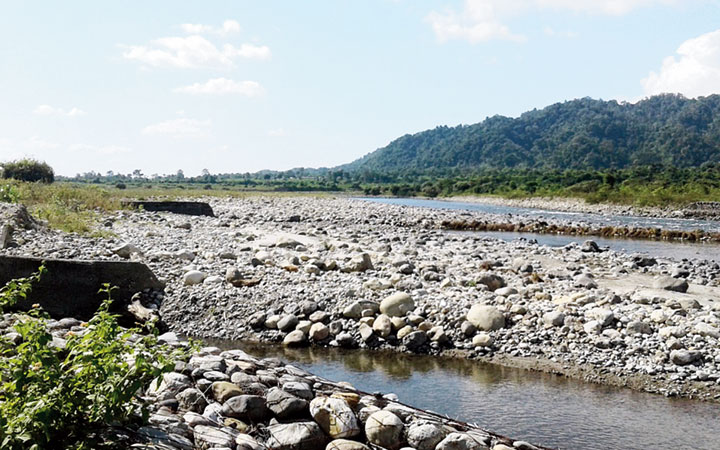Threats to the Barnadi-Jomotsangkha forest complex straddling the India and Bhutan border in mainly from home turf here.
This was revealed in the study done by forest managers of Assam and Bhutan with technical support from Aaranyak, an NGO.
This is the first time a study was done on the Jomotsangkha-Barnadi forest complex, which is on the eastern edge of the Trans-Manas boundary conservation area (TraMCA).
Camera-trapping surveys were done in 2017 and 2018 covering the three study sites, Barnadi wildlife sanctuary and Khalingduar reserve forest in Assam and Jomotsangkha wildlife sanctuary in Bhutan.
The report said camera traps were placed at the locations where animal concentration was high.The cameras were placed in steel cages customised specifically for the cameras to minimise damage by animals.
In 2017, camera traps were placed at 57 locations — six at Barnadi wildlife sanctuary, nine in Khalingduar reserve forest and 42 in Jomotsangkha wildlife sanctuary. In 2018, camera traps were placed at 82 locations — five in Barnadi wildlife sanctuary, nine in Khalingduar reserve forest and 68 at Jomotsangkha wildlife sanctuary.
“The concentrations of all threats were mostly found on the Indian side of the Barnadi-Jomotsangkha forest complex,” the report revealed. The forest complex is high in biodiversity with 27 species of mammals recorded during the study, using the state-of-the-art camera trapping techniques.
The study identified six distinct categories of forest use and related threats from the photo captures. These include grazing livestock, people carrying fishing gear, persons entering with no visible intent, non-timber forest products, people carrying machete and other similar weapons and hunting.
“Among all threats, livestock grazing was found to be highest threat, followed by unknown people and cutting tools in both 2017 and 2018,” the study said. In fact, the meeting between officials from both sides on October 11 stressed on improving law enforcement in the India-administered areas.
Jomotshangkha wildlife sanctuary is one of the 10 protected areas in Bhutan and is spread over area of 335 square km and is situated in the south-easternmost part of the country. It is bordered by Udalguri district of Assam in the south and Arunachal Pradesh in the east. The sanctuary forms an important part of the Himalayan subtropical broad-leaved forest ecosystem, which is an important element in the Himalayan eco-region.
The complex is a key waterscape for sustainable living and livelihood of lakhs of people living in Udalguri, Darrang and Sonitpur districts of Assam.










